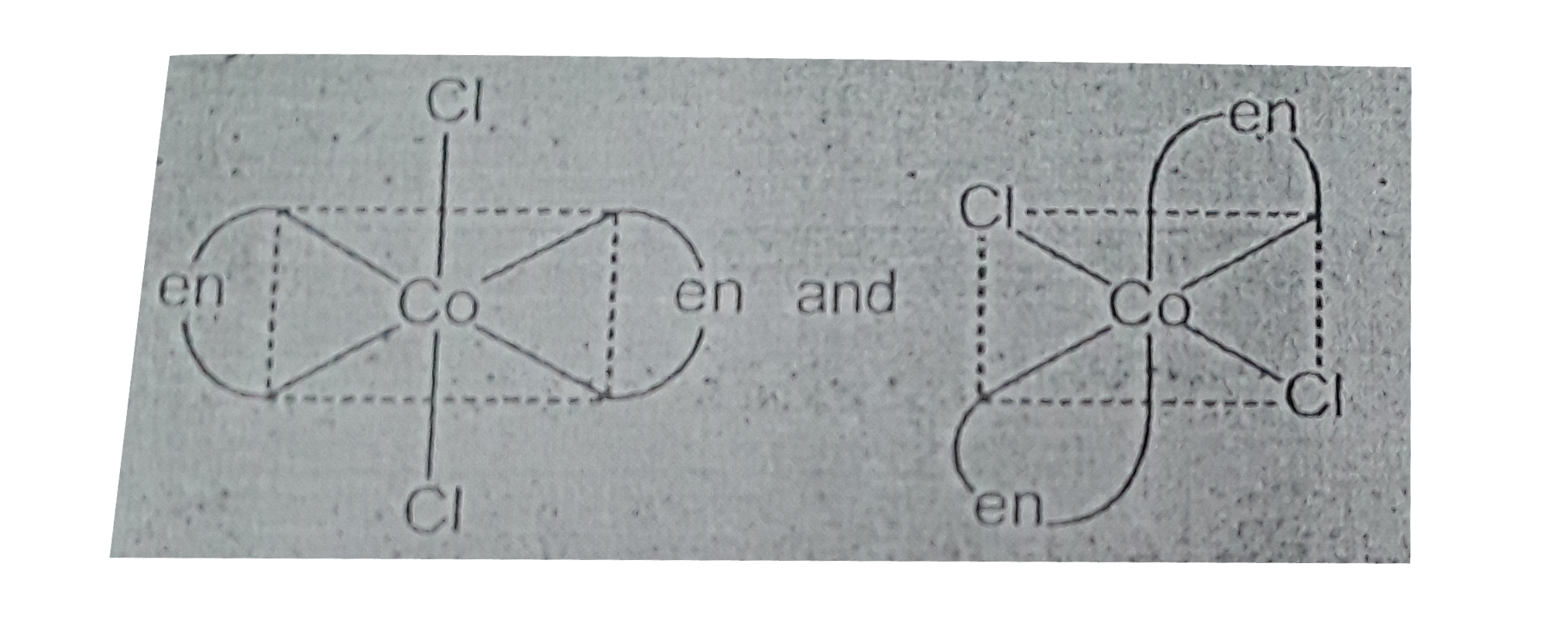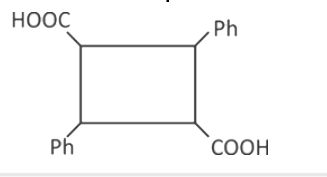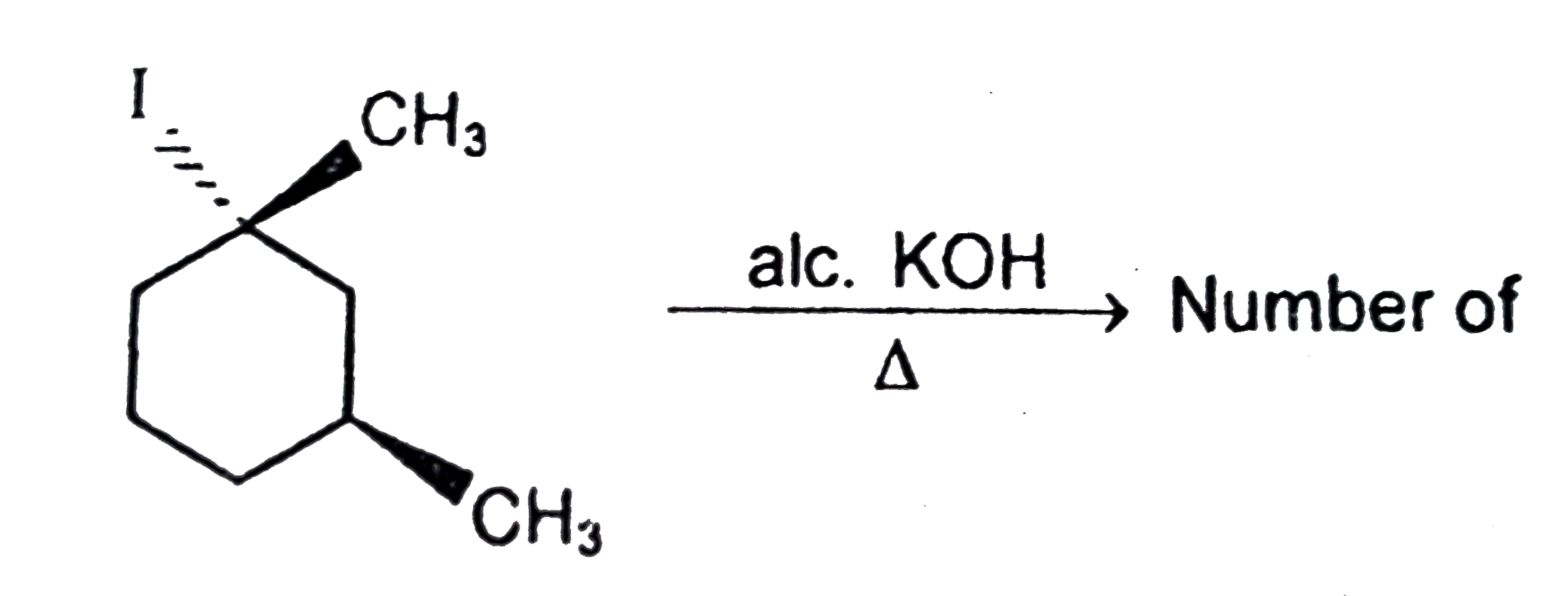In Ketohexose the possible optical isomers are
12
4
16
8
The correct Answer is:D
To determine the number of possible optical isomers in a ketohexose, we can follow these steps:
Step 1: Understand the Structure of Ketohexose
Ketohexose is a type of sugar that contains six carbon atoms and a ketone functional group. The general structure can be represented as:
- CH2OH - C(=O) - CH(OH) - CH(OH) - CH(OH) - CH2OH
Step 2: Identify the Chiral Centers
A chiral center (or stereocenter) is a carbon atom that is bonded to four different groups. In the case of ketohexose, we need to identify these chiral centers:
- In the structure of ketohexose, there are three chiral centers. These are typically found in the carbon atoms that are bonded to hydroxyl (–OH) groups and are not part of the carbonyl (C=O) group.
Step 3: Calculate the Number of Optical Isomers
The number of optical isomers can be calculated using the formula:
Number of optical isomers=2n
where n is the number of chiral centers.
In this case, since we have identified 3 chiral centers:
n=3
Thus, the number of optical isomers is:
23=8
Step 4: Conclusion
Therefore, the possible optical isomers of ketohexose are 8.
Final Answer
The correct answer is 8 optical isomers.
---
Ketohexose is a type of sugar that contains six carbon atoms and a ketone functional group. The general structure can be represented as:
- CH2OH - C(=O) - CH(OH) - CH(OH) - CH(OH) - CH2OH
A chiral center (or stereocenter) is a carbon atom that is bonded to four different groups. In the case of ketohexose, we need to identify these chiral centers:
- In the structure of ketohexose, there are three chiral centers. These are typically found in the carbon atoms that are bonded to hydroxyl (–OH) groups and are not part of the carbonyl (C=O) group.
The number of optical isomers can be calculated using the formula:
Number of optical isomers=2n
where n is the number of chiral centers.
n=3
Thus, the number of optical isomers is:
23=8
Therefore, the possible optical isomers of ketohexose are 8.
The correct answer is 8 optical isomers.
Topper's Solved these Questions
- BOOK - RESONANCE ENGLISHCHAPTER - BIOMOLECULESEXERCISE - Ex-1(sec-B)Part-II5videos
BIOMOLECULES
- BOOK - RESONANCE ENGLISHCHAPTER - BIOMOLECULESEXERCISE - Ex-1(sec-C)Part-II8videos
BIOMOLECULES
- BOOK - RESONANCE ENGLISHCHAPTER - BIOMOLECULESEXERCISE - Ex-1(sec-C)Part-I5videos
BIOMOLECULES
- BOOK - RESONANCE ENGLISHCHAPTER - BASIC CONCEPTSEXERCISE - ORGANIC CHEMISTRY(BASIC CONCEPTS)27videos
BASIC CONCEPTS
- BOOK - RESONANCE ENGLISHCHAPTER - BIOMOLECULES & POLYMEREXERCISE - ORGANIC CHEMISTRY(Biomolecules & Polymer)34videos
BIOMOLECULES & POLYMER
Similar Questions
How many different alcohol (not including optical isomers) are possible with the molecular formula : C4H10O?
View SolutionFor the given complex [CoCl2(en)(N3)2]+, the number of geometrical iosmers, the number of optical isomers and total number of isomers of all type possible respectively are
View SolutionWithout considering stereoisomers the number of possible
structural isomers of dibromobutane isView SolutionAmong the three possible isomers of dibromo benzenes the highest melthing point is possessed by
View SolutionWrite the possible isomers of the C7H8
View SolutionThe possible number of the optical isomers in [Cr(en)2CI2]⊕ is .
View SolutionAre the following two compounds optical isomers ?
 View Solution
View SolutionFind the number of optical isomers for this sizes compound.
 View Solution
View Solution
Number of possible alkene isomers will be:View SolutionWrite all the geometrical isomers of [Pt(NH3)(Br)(Cl)(py)] and how many of these will exhibit optical isomers?
View Solution

